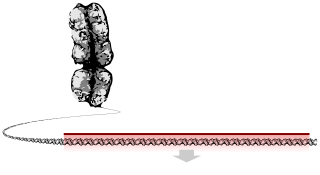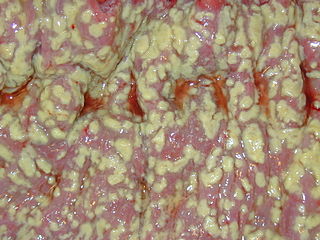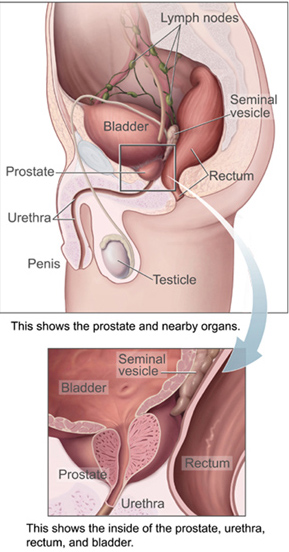
An antibiotic is a type of antimicrobial substance active against bacteria. It is the most important type of antibacterial agent for fighting bacterial infections, and antibiotic medications are widely used in the treatment and prevention of such infections. They may either kill or inhibit the growth of bacteria. A limited number of antibiotics also possess antiprotozoal activity. Antibiotics are not effective against viruses such as the ones which cause the common cold or influenza. Drugs which inhibit growth of viruses are termed antiviral drugs or antivirals. Antibiotics are also not effective against fungi. Drugs which inhibit growth of fungi are called antifungal drugs.

Antimicrobial resistance occurs when microbes evolve mechanisms that protect them from antimicrobials, which are drugs used to treat infections. This resistance affects all classes of microbes, including bacteria, viruses, protozoa, and fungi. Together, these adaptations fall under the AMR umbrella, posing significant challenges to healthcare worldwide. Misuse and improper management of antimicrobials are primary drivers of this resistance, though it can also occur naturally through genetic mutations and the spread of resistant genes.

Deoxyribonucleic acid is a polymer composed of two polynucleotide chains that coil around each other to form a double helix. The polymer carries genetic instructions for the development, functioning, growth and reproduction of all known organisms and many viruses. DNA and ribonucleic acid (RNA) are nucleic acids. Alongside proteins, lipids and complex carbohydrates (polysaccharides), nucleic acids are one of the four major types of macromolecules that are essential for all known forms of life.

An ion thruster, ion drive, or ion engine is a form of electric propulsion used for spacecraft propulsion. An ion thruster creates a cloud of positive ions from a neutral gas by ionizing it to extract some electrons from its atoms. The ions are then accelerated using electricity to create thrust. Ion thrusters are categorized as either electrostatic or electromagnetic.

Clostridioides difficile infection, also known as Clostridium difficile infection, is a symptomatic infection due to the spore-forming bacterium Clostridioides difficile. Symptoms include watery diarrhea, fever, nausea, and abdominal pain. It makes up about 20% of cases of antibiotic-associated diarrhea. Antibiotics can contribute to detrimental changes in gut microbiota; specifically, they decrease short-chain fatty acid absorption which results in osmotic, or watery, diarrhea. Complications may include pseudomembranous colitis, toxic megacolon, perforation of the colon, and sepsis.

Chemical ecology is a vast and interdisciplinary field utilizing biochemistry, biology, ecology, and organic chemistry for explaining observed interactions of living things and their environment through chemical compounds. Early examples of the field trace back to experiments with the same plant genus in different environments, interaction of plants and butterflies, and the behavioral effect of catnip. Chemical ecologists seek to identify the specific molecules that function as signals mediating community or ecosystem processes and to understand the evolution of these signals. The chemicals behind such roles are typically small, readily-diffusible organic molecules that act over various distances that are dependent on the environment but can also include larger molecules and small peptides.

Synthetic biology (SynBio) is a multidisciplinary field of science that focuses on living systems and organisms, and it applies engineering principles to develop new biological parts, devices, and systems or to redesign existing systems found in nature.

Microbial ecology is the ecology of microorganisms: their relationship with one another and with their environment. It concerns the three major domains of life—Eukaryota, Archaea, and Bacteria—as well as viruses. This relationship is often mediated by secondary metabolites produced my microorganism. These secondary metabolites are known as specialized metabolites and are mostly volatile or non volatile compounds. These metabolites include terpenoids, sulfur compounds, indole compound and many more.

Pseudomonas aeruginosa is a common encapsulated, Gram-negative, aerobic–facultatively anaerobic, rod-shaped bacterium that can cause disease in plants and animals, including humans. A species of considerable medical importance, P. aeruginosa is a multidrug resistant pathogen recognized for its ubiquity, its intrinsically advanced antibiotic resistance mechanisms, and its association with serious illnesses – hospital-acquired infections such as ventilator-associated pneumonia and various sepsis syndromes. P. aeruginosa is able to selectively inhibit various antibiotics from penetrating its outer membrane - and has high resistance to several antibiotics. According to the World Health Organization P. aeruginosa poses one of the greatest threats to humans in terms of antibiotic resistance.

Gut microbiota, gut microbiome, or gut flora are the microorganisms, including bacteria, archaea, fungi, and viruses, that live in the digestive tracts of animals. The gastrointestinal metagenome is the aggregate of all the genomes of the gut microbiota. The gut is the main location of the human microbiome. The gut microbiota has broad impacts, including effects on colonization, resistance to pathogens, maintaining the intestinal epithelium, metabolizing dietary and pharmaceutical compounds, controlling immune function, and even behavior through the gut–brain axis.
Levilactobacillus brevis is a gram-positive, rod shaped species of lactic acid bacteria which is heterofermentative, creating CO2, lactic acid and acetic acid or ethanol during fermentation. L. brevis is the type species of the genus Levilactobacillus (previously L. brevis group), which comprises 24 species. It can be found in many different environments, such as fermented foods, and as normal microbiota. L. brevis is found in food such as sauerkraut and pickles. It is also one of the most common causes of beer spoilage. Ingestion has been shown to improve human immune function, and it has been patented several times. Normal gut microbiota L. brevis is found in human intestines, vagina, and feces.
Biotextiles are specialized materials engineered from natural or synthetic fibers. These textiles are designed to interact with biological systems, offering properties such as biocompatibility, porosity, and mechanical strength or are designed to be environmentally friendly for typical household applications. There are several uses for biotextiles since they are a broad category. The most common uses are for medical or household use. However, this term may also refer to textiles constructed from biological waste product. These biotextiles are not typically used for industrial purposes.

Chronic bacterial prostatitis (CBP) is a bacterial infection of the prostate gland and a form of prostatitis. It should be distinguished from other forms of prostatitis such as acute bacterial prostatitis (ABP) and chronic pelvic pain syndrome (CPPS).
A fomite or fomes is any inanimate object that, when contaminated with or exposed to infectious agents, can transfer disease to a new host.
Cytoplasmic incompatibility (CI) is a mating incompatibility reported in many arthropod species that is caused by intracellular parasites such as Wolbachia. These bacteria reside in the cytoplasm of the host cells and modify their hosts' sperm in a way that leads to embryo death unless this modification is 'rescued' by the same bacteria in the eggs. CI has been reported in many insect species, as well as in mites and woodlice. Aside from Wolbachia, CI can be induced by the bacteria Cardinium,Rickettsiella, Candidatus Mesenet longicola and Spiroplasma. CI is currently being exploited as a mechanism for Wolbachia-mediated disease control in mosquitoes.

Solithromycin is a ketolide antibiotic undergoing clinical development for the treatment of community-acquired pneumonia and other infections.

CRISPR gene editing (CRISPR, pronounced, refers to a clustered regularly interspaced short palindromic repeats") is a genetic engineering technique in molecular biology by which the genomes of living organisms may be modified. It is based on a simplified version of the bacterial CRISPR-Cas9 antiviral defense system. By delivering the Cas9 nuclease complexed with a synthetic guide RNA (gRNA) into a cell, the cell's genome can be cut at a desired location, allowing existing genes to be removed or new ones added in vivo.
Kim Lewis is an American researcher, author and academic. He is a University Distinguished Professor and the director of Antimicrobial Discovery Center at Northeastern University.
CRISPR-associated transposons or CASTs are mobile genetic elements (MGEs) that have evolved to make use of minimal CRISPR systems for RNA-guided transposition of their DNA. Unlike traditional CRISPR systems that contain interference mechanisms to degrade targeted DNA, CASTs lack proteins and/or protein domains responsible for DNA cleavage. Specialized transposon machinery, similar to that of the well characterized Tn7 transposon, complexes with the CRISPR RNA (crRNA) and associated Cas proteins for transposition. CAST systems have been characterized in a wide range of bacteria and make use of variable CRISPR configurations including Type I-F, Type I-B, Type I-C, Type I-D, Type I-E, Type IV, and Type V-K. MGEs remain an important part of genetic exchange by horizontal gene transfer and CASTs have been implicated in the exchange of antibiotic resistance and antiviral defense mechanisms, as well as genes involved in central carbon metabolism. These systems show promise for genetic engineering due to their programmability, PAM flexibility, and ability to insert directly into the host genome without double strand breaks requiring activation of host repair mechanisms. They also lack Cas1 and Cas2 proteins and so rely on other more complete CRISPR systems for spacer acquisition in trans.

Iboxamycin is a synthetic lincosamide or oxepanoprolinamide antibiotic. It binds to the bacterial ribosome in both Gram-negative and Gram-positive bacteria and it has been found to effective against bacteria which are resistant to other antibiotics that target the large ribosomal subunit. It was developed by combining an oxepanoproline unit with the aminooctose residue of clindamycin.














